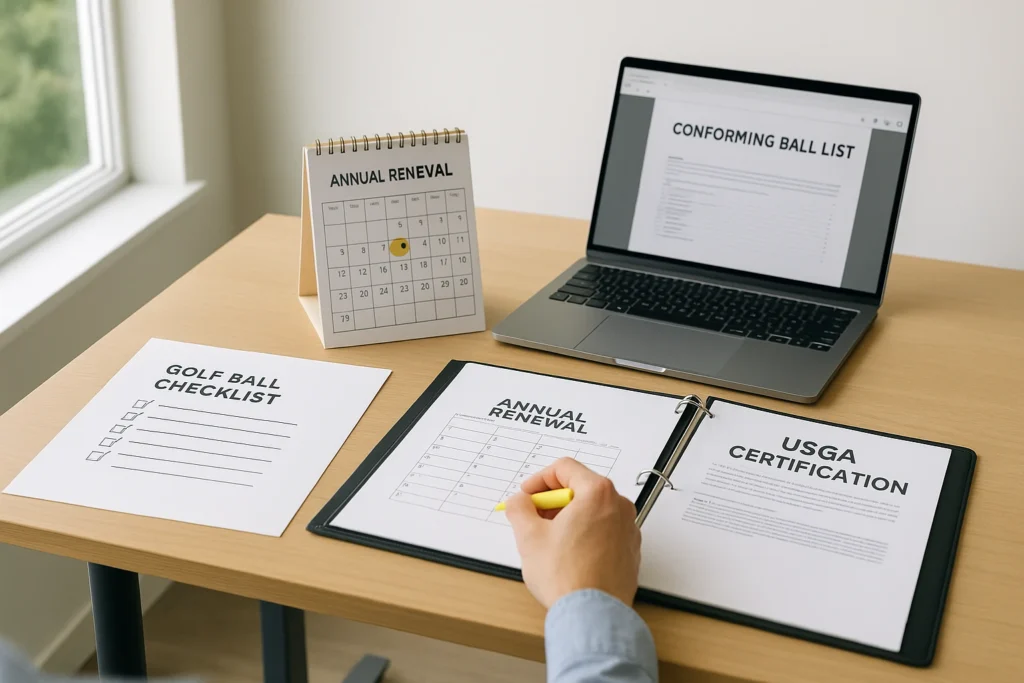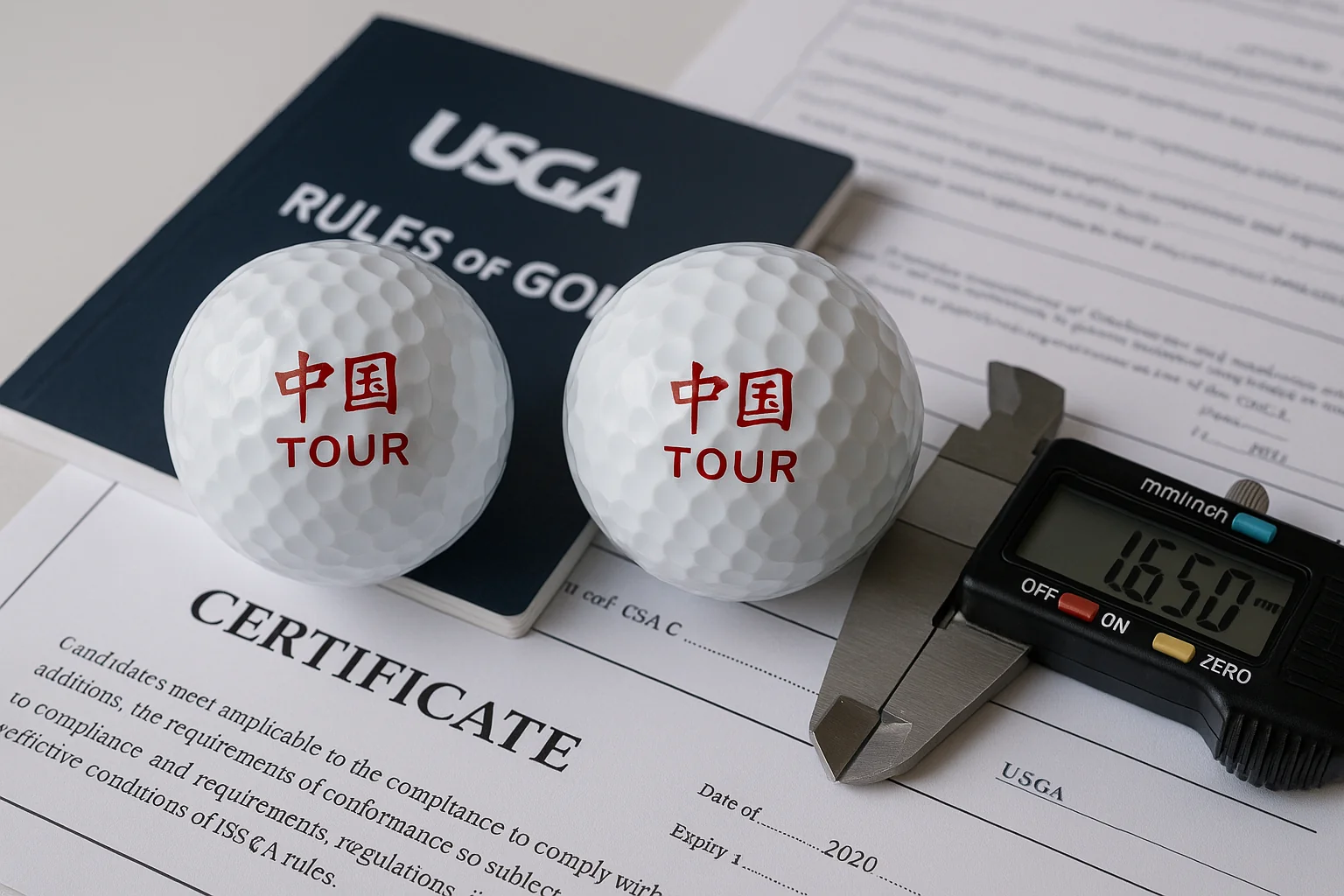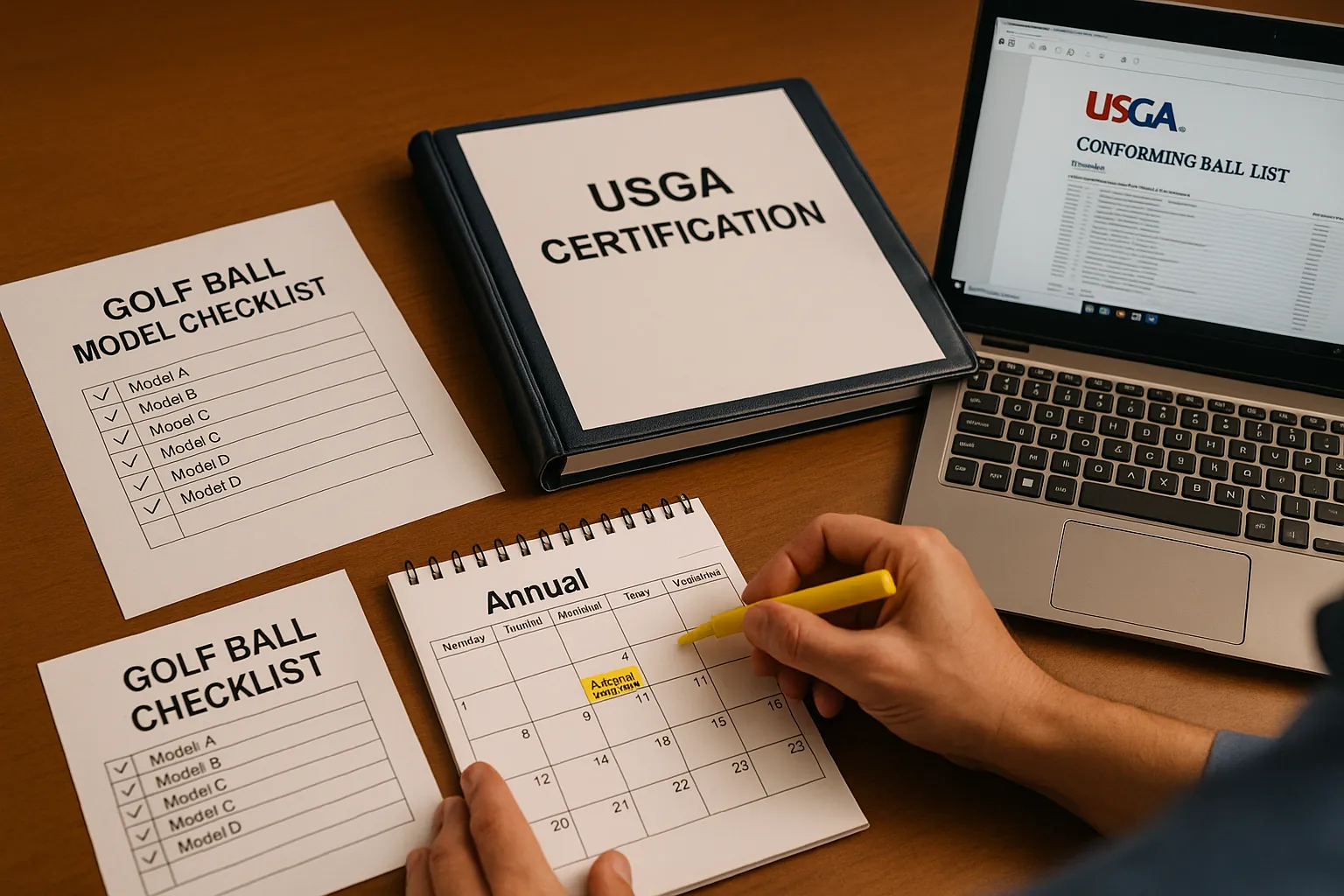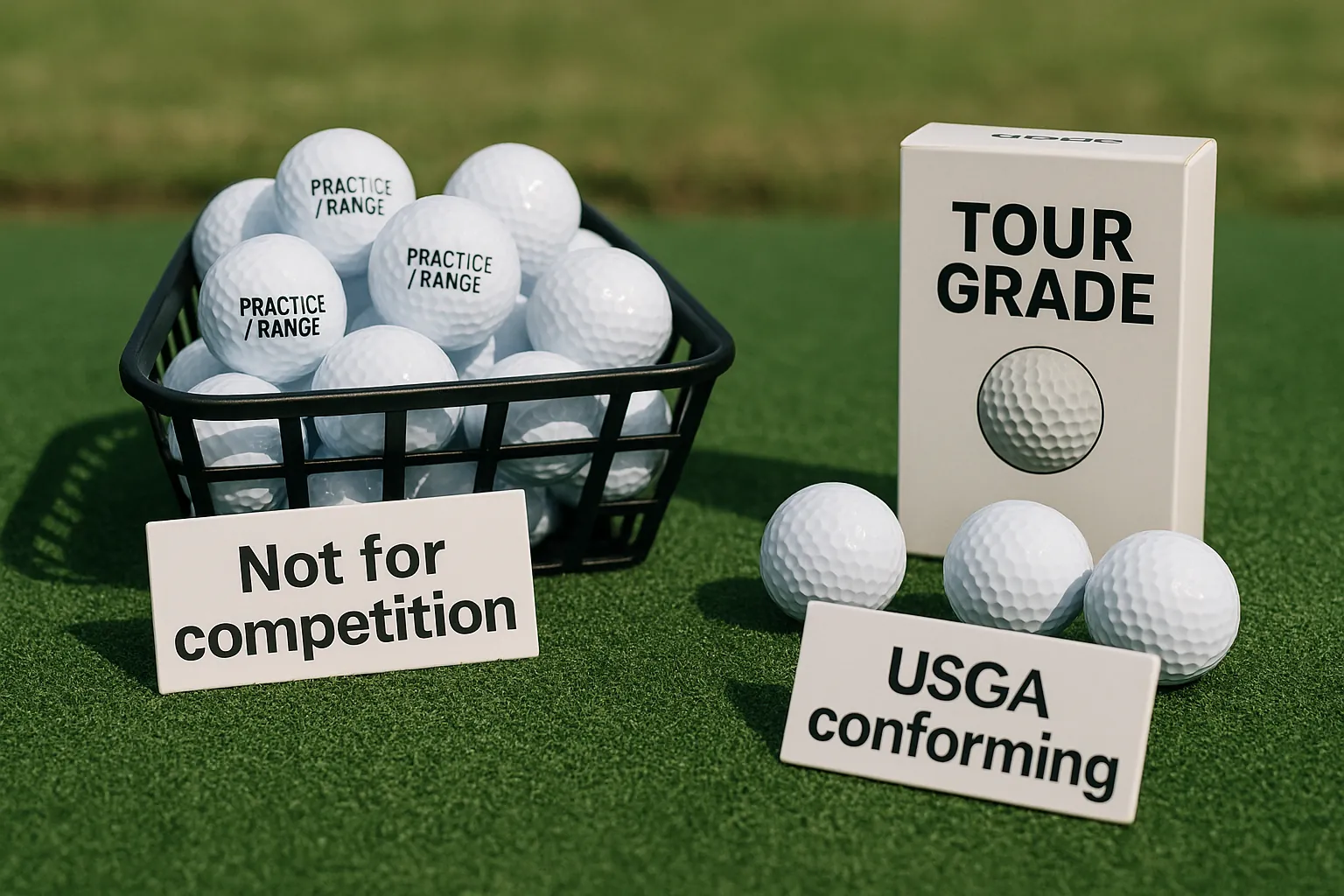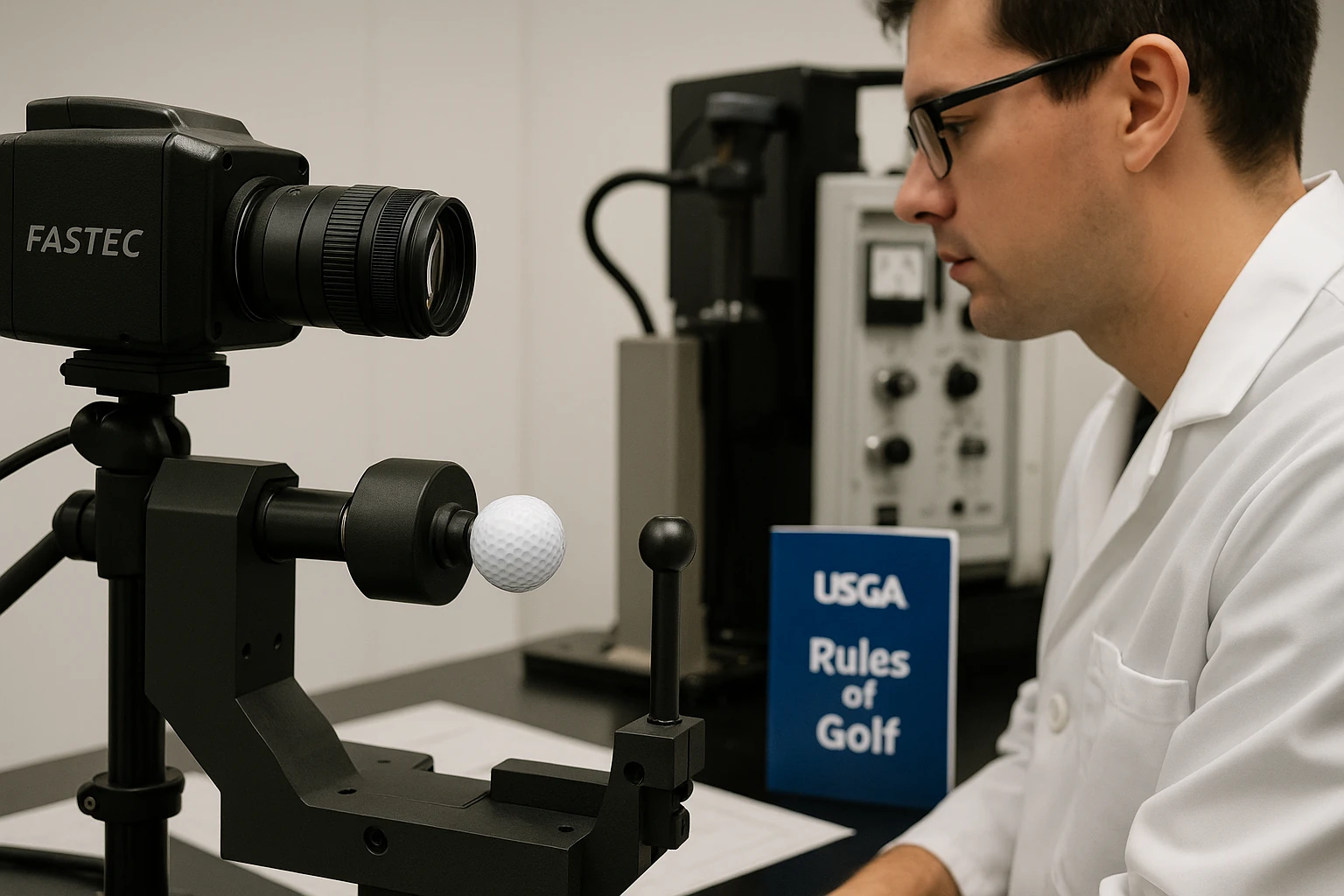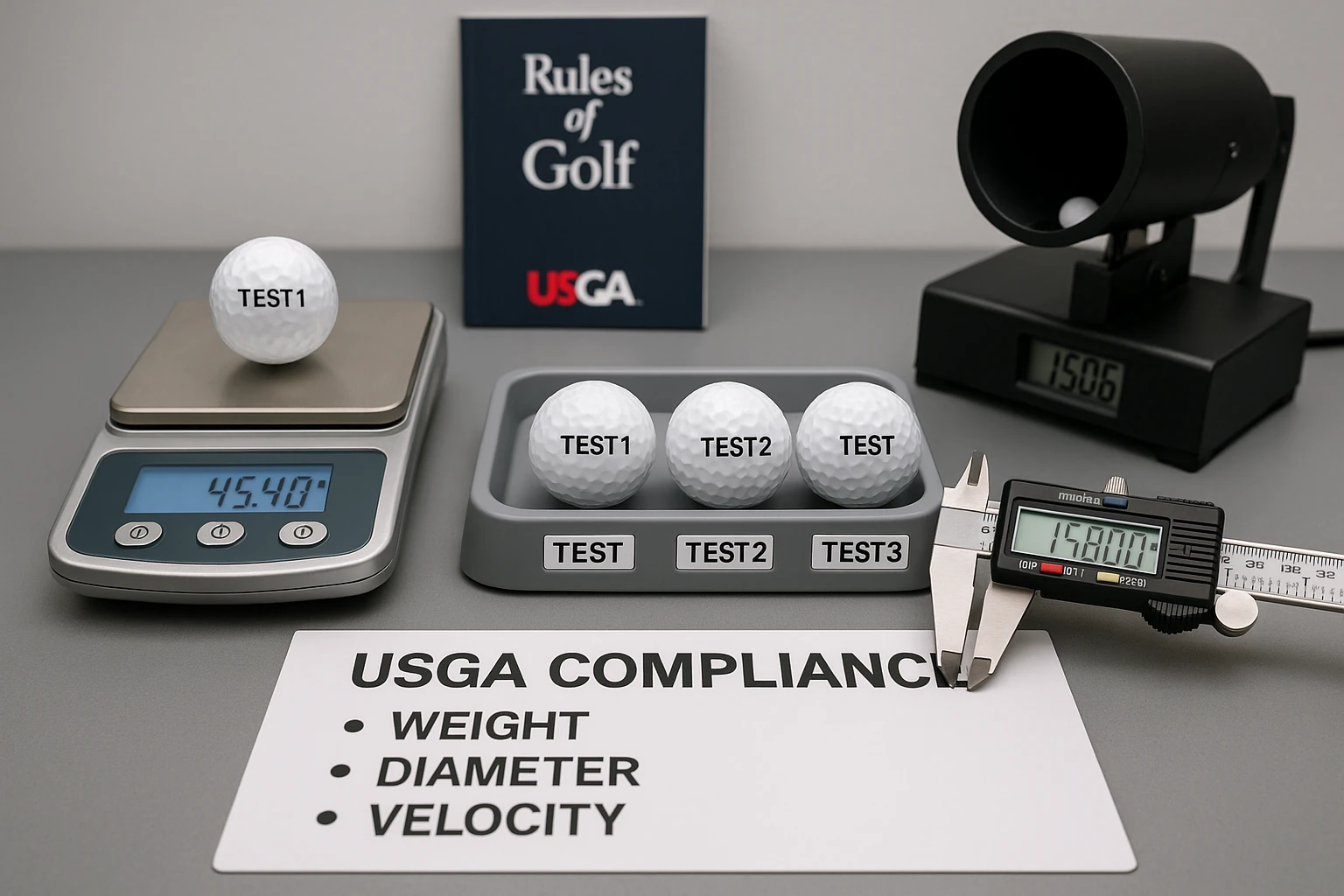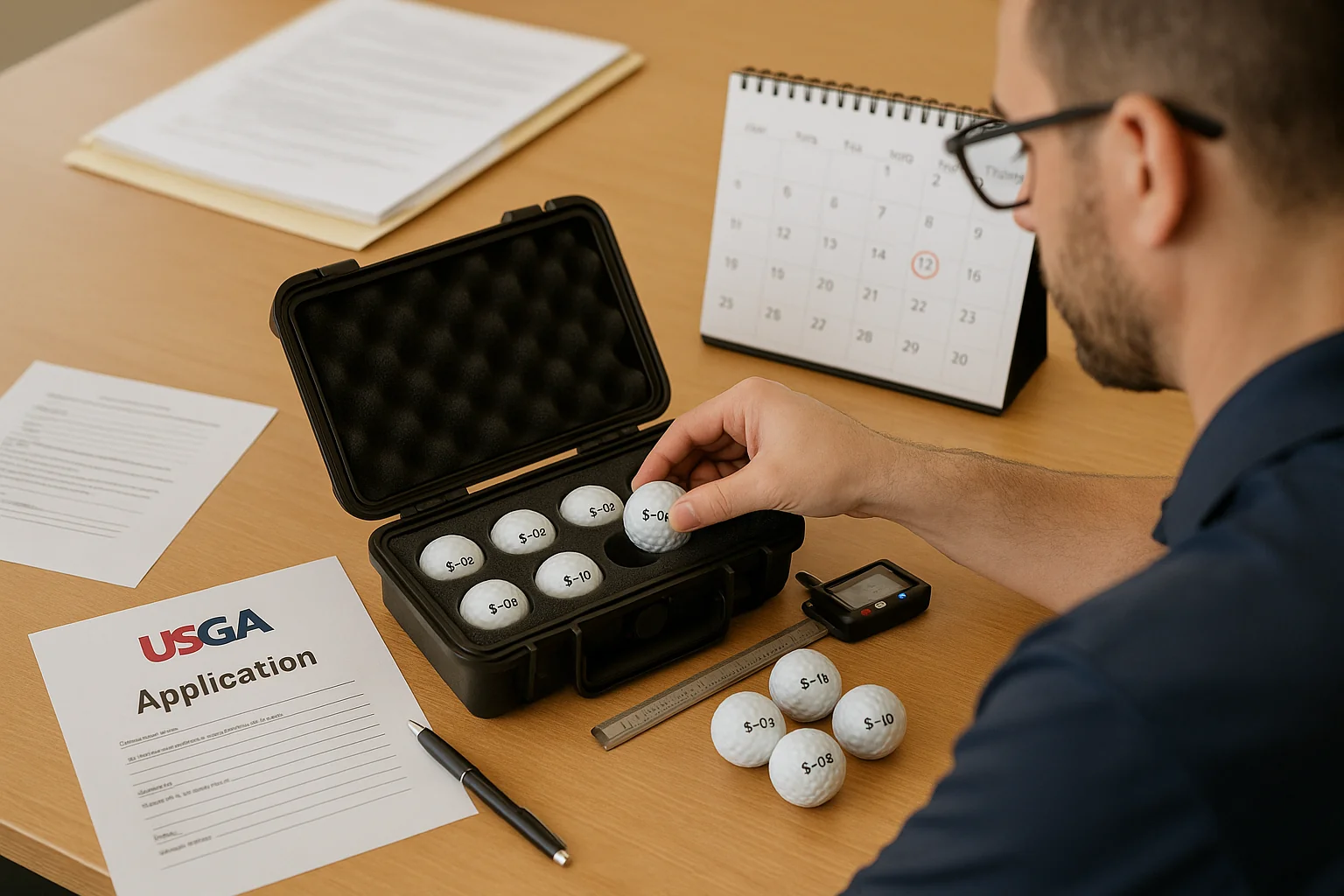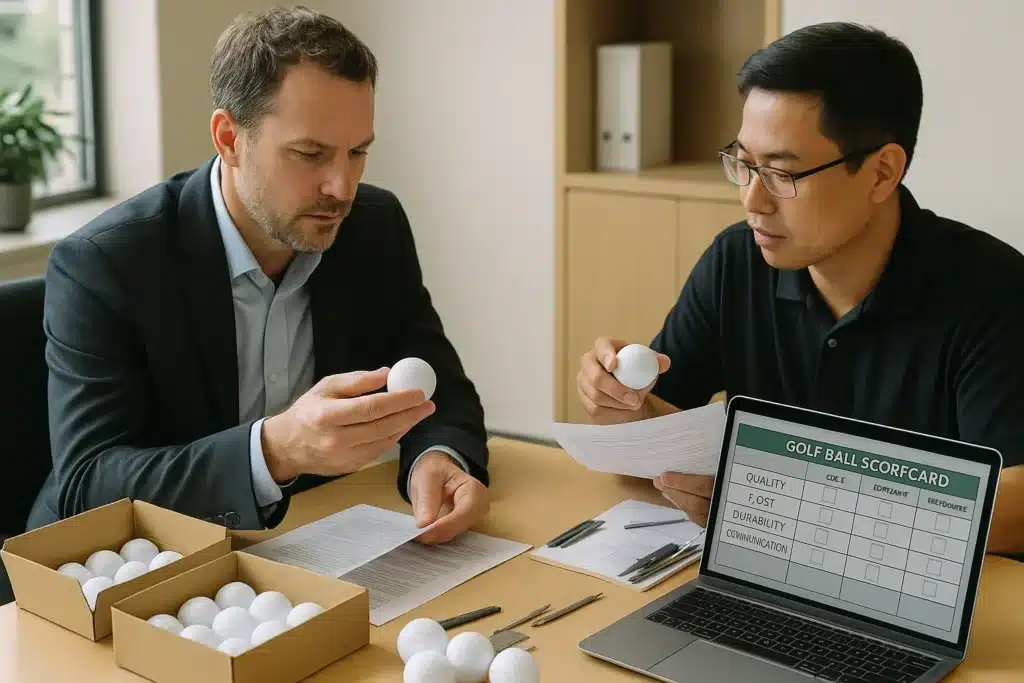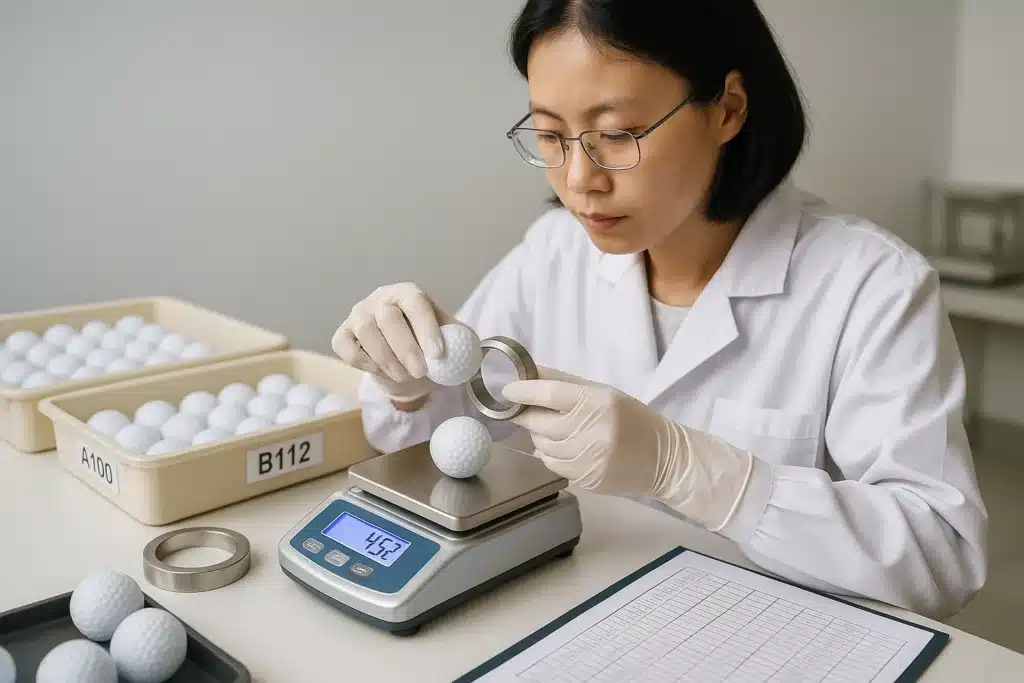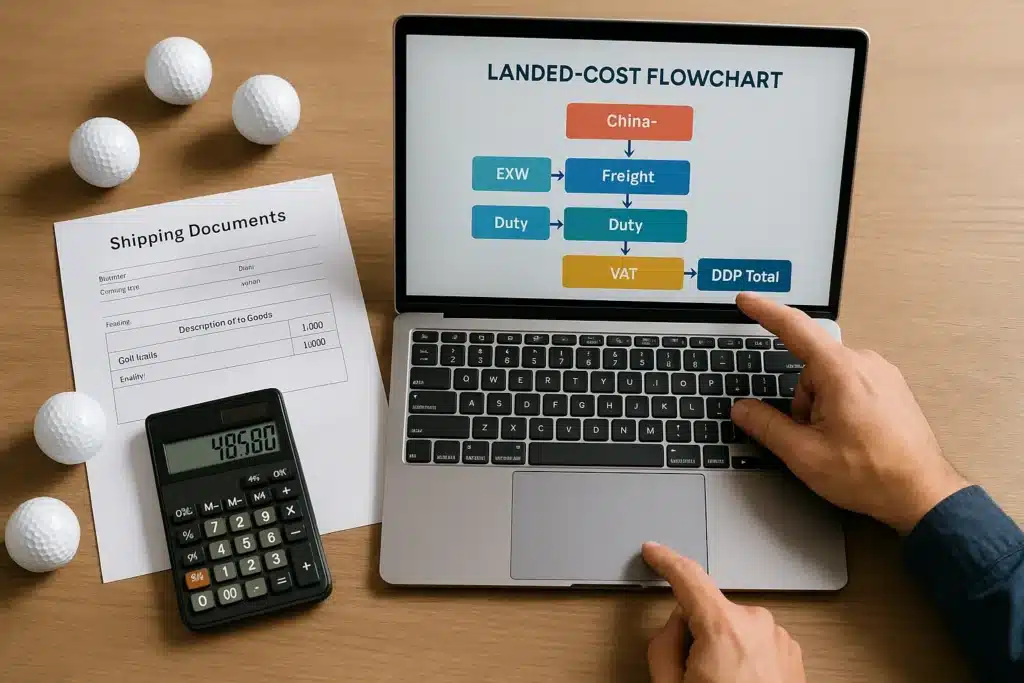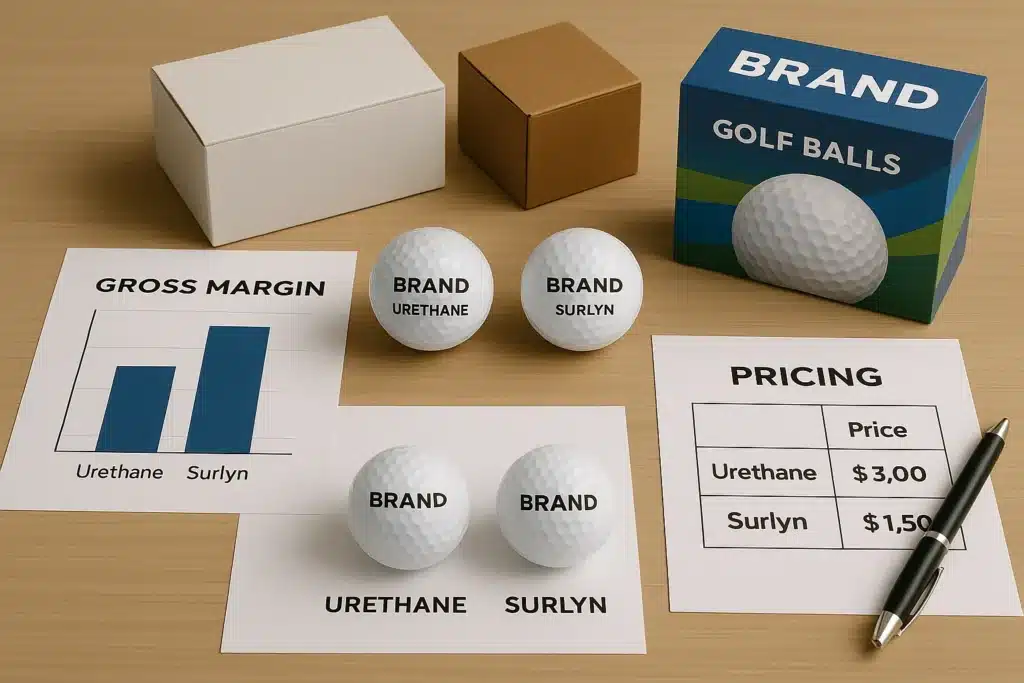Yes, China-made tour-level golf balls can meet USGA standards, as long as they pass the association’s performance-based certification. The USGA evaluates balls based on weight, diameter, symmetry, and flight—not where the ball is made. Many Chinese manufacturers, including Golfara, already produce models that meet these standards and have appeared on the official List of Conforming Golf Balls (buyers should verify the current status).
What Is the USGA and What Does It Do?
The USGA (United States Golf Association) defines and enforces the Rules of Golf in the U.S., including equipment rules that set the technical limits for conforming balls.
Together with The R&A, it maintains a unified global rulebook and testing protocols so that a conforming ball performs fairly and consistently across all levels of play.
How does the USGA’s equipment role relate to USGA standards?
USGA standards translate into measurable limits—weight, size, symmetry, and speed—that determine whether a golf ball is conforming.
The Equipment Standards team publishes methods and runs lab tests on submitted balls. Your sourcing decision should assume these tests are the only benchmark that matters for competition. Country-of-origin or brand hype does not affect conformance under USGA standards.
How do the USGA and The R&A coordinate on golf balls?
USGA and The R&A jointly publish the Conforming Ball List so one result applies worldwide for sanctioned play.
A model approved through this joint process appears on a single global list. For B2B buyers, that means one certification pathway covers both U.S. and most international competitions, simplifying compliance and logistics for your retail and tournament accounts.
Do All Golf Balls Need USGA Certification?
No, only golf balls intended for official competitions need certification under USGA standards; practice and range balls do not, unless they can reasonably enter competition.
The list is about intended use. If a ball is sold into retail and might be used in events, it must be conforming. If it’s clearly labeled “Practice,” “Range,” or “X-Out,” it typically falls outside competitive scope.
- Practice balls (2- or 3-piece Surlyn) labeled “Practice/Range” normally skip USGA testing.
- If a ball is a consumer retail product, you should assume it must meet USGA standards and be listed.
- Commercial driving-range balls are consumables; certification adds cost without benefit.
📊 Table: Do You Need USGA Certification for Your Golf Ball?
| Ball Type | Structure | Certification Needed? | Explanation |
|---|---|---|---|
| Practice Ball | 2 or 3-piece Surlyn | No | Labeled “Practice/Range,” used in driving ranges only |
| Tournament Ball | 3+ layer urethane | Yes | Designed for retail or competitive play |
| Promotional/Custom Ball | Varies | No (usually) | For events/giveaways; not intended for competition |
| Retail-use Practice Ball | Any | Yes | If sold to consumers and may enter competitions |
When do practice balls cross into USGA standards territory?
If you reposition a practice ball into retail where it might be used in competition, it must meet USGA standards and be on the list.
Marking alone doesn’t exempt a SKU if consumer use could bring it to a tournament. Rebrand plans should include conformance testing to avoid “non-conforming” rulings at events.
How should you label to avoid confusion?
Use clear surface markings (“Practice,” “Range,” or “X-Out”) and distinct packaging when the ball isn’t meant for competition.
Transparent labeling helps your downstream partners—ranges, academies, resorts—avoid misuse. It also protects your brand from complaints if a customer carries a non-conforming ball into an event.
What Are the USGA’s Certification Standards for Golf Balls?
USGA standards require every conforming ball to pass four core limits: weight (≤45.93 g), diameter (≥42.67 mm), symmetry (no significant imbalance), and initial velocity (within cap).
These parameters protect the game’s integrity by constraining distance, flight stability, and feel, while allowing manufacturers to innovate within the envelope.
📊 Table: USGA Certification Requirements at a Glance
| Parameter | USGA Requirement | Common Non-Conformance Reasons |
|---|---|---|
| Weight | ≤ 45.93 g | Core density variance; overweight cover |
| Diameter | ≥ 42.67 mm | Shrinkage; compression creep |
| Symmetry | Balanced flight required | Off-center cores; uneven mantle |
| Velocity (COR) | Within limit | Excessively hard core; rebound too high |
| Surface Coating | Not specified | Uneven finish can perturb flight |
How do weight and diameter affect USGA standards outcomes?
Weight and diameter are binary gates: too heavy or too small and the model fails—no exceptions.
China-based plants manage these with recipe control and cavity maintenance. Process changes (e.g., core mix, cure time) must be validated at pilot scale to keep weight/size repeatable across batches, especially for multi-layer urethane tour balls.
What does “symmetry” really test?
Symmetry checks for directional bias caused by off-center cores, eccentric mantles, or uneven covers.
Even if weight and size pass, an unbalanced center can create biased aerodynamics. Robust centering, rotational QC, and post-mold inspection are essential. Mature Chinese lines deploy automated pin placement, core runout checks, and X-ray sampling when symmetry risk is high.
How is initial velocity capped under USGA standards?
Initial velocity limits the “spring effect” so distance stays within the game’s intent.
Tour-level cores push right up to the cap. Factories tune compression, crosslink density, and cover hardness to maximize legal speed without breaching limits. Data logging and periodic reference builds are best practice to keep models on the safe side of the line.
How Do Manufacturers Apply for USGA Certification?
To certify a model, the manufacturer submits 24 balls per SKU, completes the application, and undergoes lab tests for size, weight, initial velocity, and symmetry.
Results determine whether the model appears on the Conforming Ball List, updated monthly (effective the first Wednesday). One no-charge retest and one symmetry retest are available per model.
-
Submit: application + 24 labeled samples per model
-
Tests: weight, diameter, symmetry, initial velocity
-
Retests: one general + one symmetry retest allowed
-
Listing: appears on the monthly Conforming Ball List if conforming
👉 View the current list here (always up to date): USGA Conforming Golf Ball List (PDF)
How should you prepare samples for USGA standards testing?
Freeze your recipe, tooling, and QC checkpoints before sampling; then serialize, pack, and document traceability.
Provide final-finish product identical to what you’ll sell. Include model identifiers that match retail markings. Keep retained samples and full batch records to troubleshoot if a retest is needed.
When should you submit to align with the monthly list?
Plan backward from launch, targeting submission that hits the next monthly list update.
Because the list is effective the first Wednesday each month, avoid “dead zones” around holidays. Buffer for courier time, lab queue, and potential retest. Your sales team will appreciate a clean “first day conforming” story for distributors.
✔ True — Submission timeline affects first eligible listing date
Plan sampling → courier → lab queue → possible retest; missing the cut-off pushes your appearance on the List of Conforming Golf Balls by a full month.
✘ False — “Once I submit, I’m listed right away.”
Listing becomes effective only on the monthly update (first Wednesday).
Is USGA Certification Permanent or Renewable?
Certification isn’t permanent. To remain on the Conforming Ball List, each model must be re-submitted annually for verification, and late renewals can attract a premium processing fee.
While the USGA doesn’t publish flat “prices,” industry practice places per-model annual testing around $1,000–$1,500, plus a $1,500 late fee if you miss the window.
How should brands budget multi-model USGA standards portfolios?
Treat conformance as an annual operating expense at the model level and ladder approvals across quarters.
If you carry 10 SKUs, your annual testing budget could be $10,000–$15,000 excluding any late fees. Spreading renewals reduces cash spikes and gives you time to address any retest outcomes without disrupting launches.
What does “annual” mean in practical procurement?
It means your purchase calendars should align with certification calendars to avoid stockouts of listed models.
Forecast renewals, build in QA hold points, and advise distributors when listings roll over. If a model lapses, your team should have a “listed alternative” ready, especially for tournament channels that enforce USGA standards strictly.
Why Do Some Chinese Manufacturers Let Certifications Expire?
Because annual conformance across many SKUs adds real cost, factories may skip some renewals after an initial pass—but keep the same materials, tooling, and process controls.
From a manufacturing standpoint, once the design is fixed, year-over-year production can remain stable within USGA standards even if the listing is not renewed every cycle.
What should buyers do when a supplier says “we conform, but the listing expired”?
Ask what changed (materials, process, tooling)—if nothing changed, past conformance is still a strong quality signal; then decide if you need relisting for your channels.
For retail and tournament use, you usually want an active listing. For range programs and promos, relisting may be optional if performance data is current.
✔ True — An expired listing can coexist with stable conformance
If materials, processes, and tooling remain unchanged, a model that once passed USGA standards will typically perform the same in later batches. The decision to renew often comes down to channel needs and budget priorities.
✘ False — “Expired means the ball is illegal or low quality now”
“Expired” means the model isn’t on the current list, not that the ball turned non-conforming overnight. For sanctioned events, you still need an active listing; for non-competition use, performance can remain identical.
Can You Trust “USGA Conforming” Claims from Suppliers?
Not automatically. Some marketing uses “USGA conforming” loosely, so you should verify against the official list and check documentation.
Ask for the exact model name as printed on the ball, the listing month/year, and any lab documentation. Cross-check the current PDF to confirm the model appears as claimed.
- Always check the official list: Conforming Golf Ball List (PDF)
- Ask for model name, historical listing dates, and QC continuity statements
- Beware of vague, unverifiable claims or old screenshots
What proof should you request to validate USGA standards claims?
Request the model’s listing screenshot with date, sample lot IDs for the submission, and a change-control statement showing no material/process changes.
If the model lapsed, ask for test data from the most recent internal QA runs. For OEM projects, require a re-submission commitment tied to your launch date.
What are the top red flags when sourcing?
Watch for model names that don’t match the ball stamp, claims like “same as big brand X,” or evasive answers on sample provenance.
Another flag is refusal to share listing months or PDFs. Good suppliers educate you on USGA standards, show paperwork, and proactively discuss whether relisting is required for your channels.
✔ True — Test reports validate a specific batch, not every shipment
A lab report proves that the tested sample met USGA standards at that time. To ensure ongoing quality, you still need batch-level QC, supplier change control, and possibly third-party checks.
✘ False — “They sent one report, so everything they ship must conform”
Treat single reports as snapshots, not guarantees. Without continuous control, identical specs can mask differences in real production.
Conclusion: Are China-Made Tour Balls a Reliable Choice?
Yes—if a model is certified or demonstrably unchanged from a prior certified build, China-made tour balls can deliver elite performance at competitive cost.
Mature factories run tight process control. Your procurement playbook should combine documentation, testing, and channel-specific decisions about relisting under USGA standards.
What’s the key takeaway for B2B buyers?
Prioritize the target channel and work backward: if tournament exposure is likely, insist on an active listing; if not, verify design stability and performance data.
Align submission timing, marketing claims, and inventory flows. A simple framework—intended use, documentation, and QC evidence—protects both performance and compliance.
How do you reduce risk when sourcing USGA standards tour balls?
Lock the spec, freeze the process, then verify: sample approval, pilot run, and third-party tests where needed.
Add contractual change-control. Require suppliers to disclose any material or process change with lead time. This is how you keep a high-spin urethane tour ball both conforming and consistent across seasons.
✔ True — “Made in China” can meet or exceed tour-level quality
China is a core manufacturing base for global golf brands. With the right materials, tooling, and QC, China-made tour-level golf balls can meet USGA standards consistently. Country-of-origin isn’t a performance variable—process control is.
✘ False — “China-made always means lower quality”
Quality is not a postcode. Execution—materials, tolerances, and testing—determines outcomes. Many China-based OEMs deliver premium tour balls that pass the strictest checks.
FAQ: What Else Should B2B Buyers Know?
Do China-made tour-level golf balls need USGA approval to be sold?
They can be sold without approval, but if consumers might use them in tournaments, approval under USGA standards is essential.
Retail channels blur into competitive play. If your ball can reasonably show up on the first tee at a sanctioned event, plan on certification to protect your brand and your customers.
If you sell only to ranges or promos and label clearly, certification may not be necessary. But always assess channel risk and local tournament rules before deciding.
How often does the Conforming Ball List update—and where can I check it?
The list updates monthly and becomes effective the first Wednesday; the official PDF is the single source of truth.
Bookmark it and check during product planning, distributor briefings, and before tournament seasons. Fast changes in your lineup should trigger a fresh review.
Link: USGA Conforming Golf Ball List (PDF)
If a model passed before, why re-test each year?
Because USGA standards treat conformance as current status, not a permanent label, and annual checks deter drift.
Even stable processes can shift with tooling wear or material substitutions. Annual verification confirms your production matches the tested configuration customers expect.
What’s the typical budget to keep 10 models active?
Industry practice suggests $10,000–$15,000 per year for testing alone, plus a $1,500 late fee if a model misses the window.
Add logistics and admin. Many factories rotate renewals to smooth cash flow. Your strategy should match your channel exposure and revenue mix.
Since 2012, Golfara has supported companies like yours with practical sourcing advice, hands-on testing plans, and on-time deliveries. If you’re currently exploring China-made tour balls that meet USGA standards, you’re welcome to reach out—no pressure at all. Even if you don’t order from us, we’re happy to share professional guidance so you can buy with confidence.
You might also like
Where Are the Golf Ball Factories in China — And What Types Can They Produce?
https://golfara.com/where-are-the-golf-ball-factories-in-china-and-what-types-can-they-produce/

